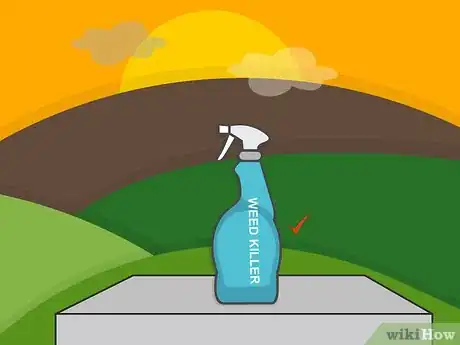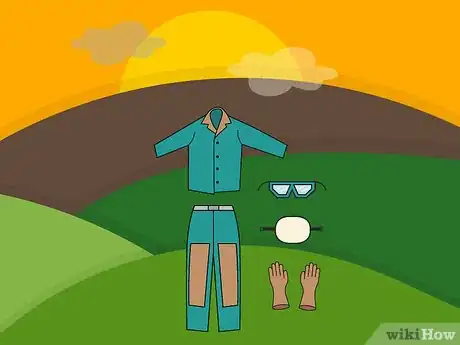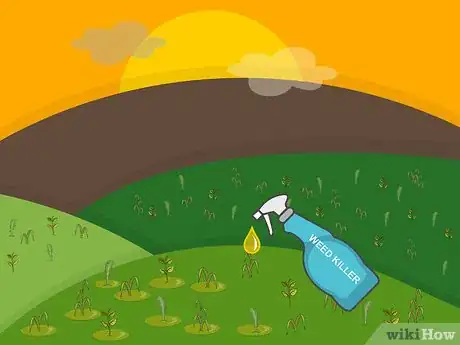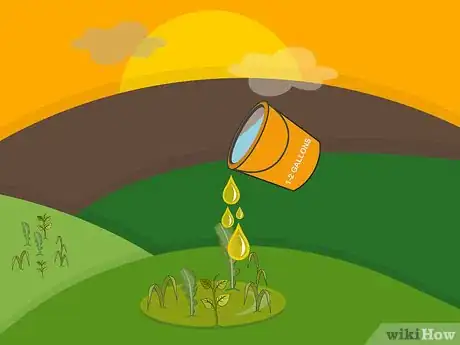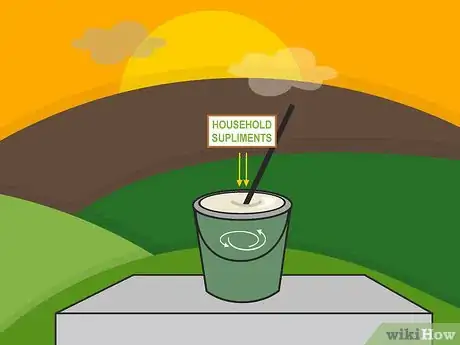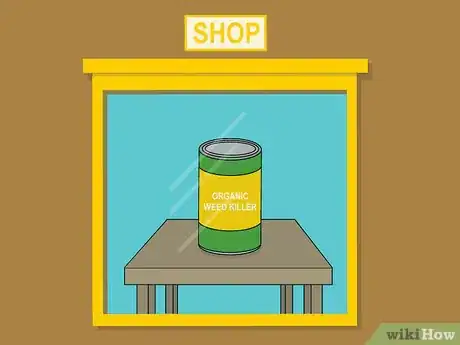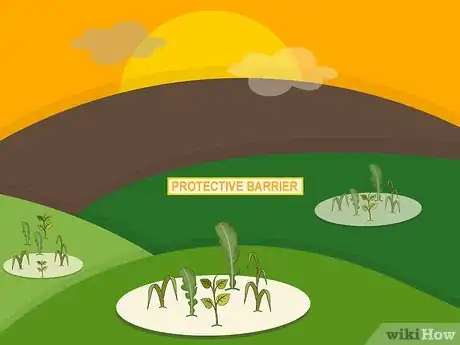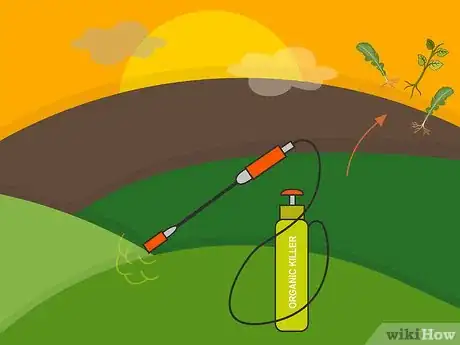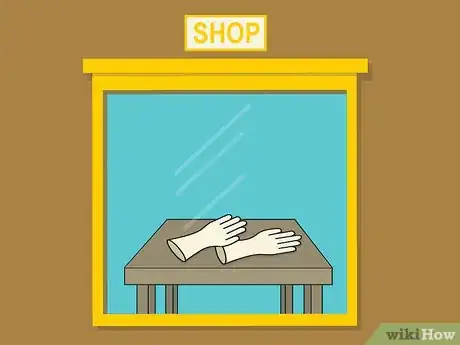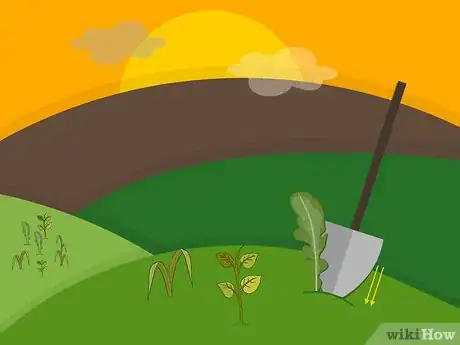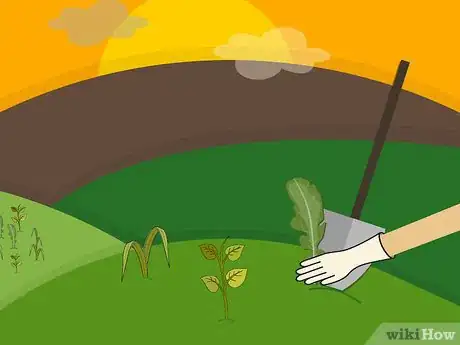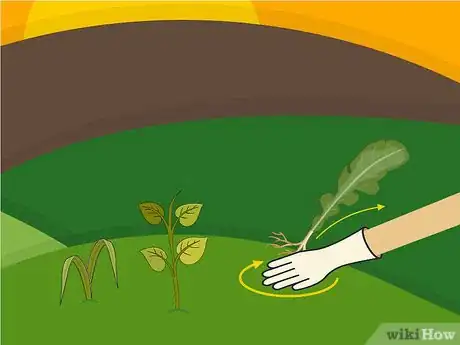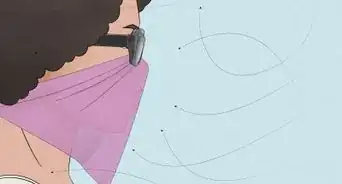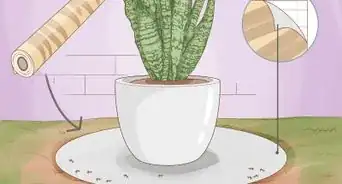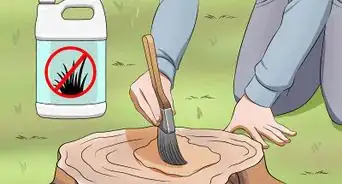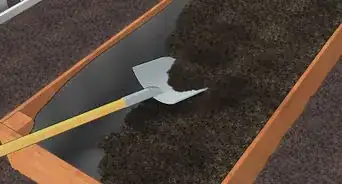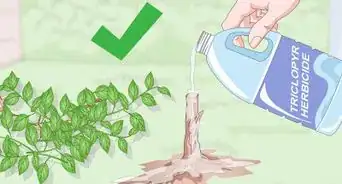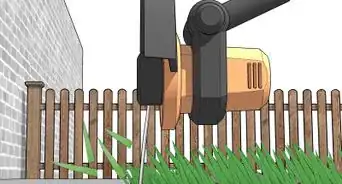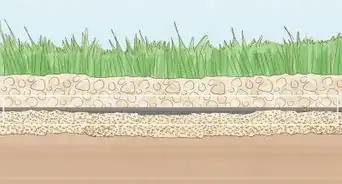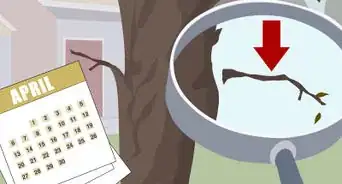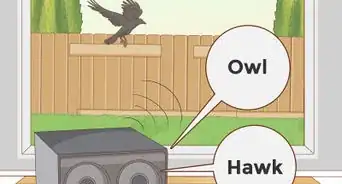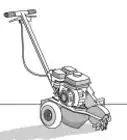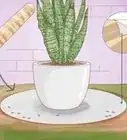This article was co-authored by Lauren Kurtz. Lauren Kurtz is a Naturalist and Horticultural Specialist. Lauren has worked for Aurora, Colorado managing the Water-Wise Garden at Aurora Municipal Center for the Water Conservation Department. She earned a BA in Environmental and Sustainability Studies from Western Michigan University in 2014.
There are 7 references cited in this article, which can be found at the bottom of the page.
This article has been viewed 35,527 times.
Weeds in your lawn are undesirable and unsightly. The quickest method for removing weeds is to use a weed-killing spray on your lawn. Be sure to spray any weed-killers on a clear, dry day so that rain doesn’t wash the chemicals off your lawn. If weeds are persistent, or if you’re concerned that the chemical spray may damage your lawn, you can try using a homemade natural weed killer or pulling the weeds by hand.
Steps
Removing Weeds with a Chemical Spray
-
1Select the right chemical spray for your weed problem. Different types of chemical weed-killing sprays are better suited for killing different varieties of weed. Read the information on the label to determine which best suits your needs.[1] Some weed killers are sold in large spray cans, while others are intended for spot application.
- Chemical sprays work most effectively on broadleaf weeds, such as dandelions and other non-grassy weeds.
- You can find chemical sprays on sale at a plant nursery or even a large supermarket.
-
2Wear clothing that protects your eyes, mouth, and skin while applying weed killer. Weed killers contain harmful chemicals and should be treated accordingly. Wear eye protection while spraying your lawn.[2] To prevent yourself from inhaling chemicals, wear a surgical mask or bandana over your mouth. Wear long sleeves, long pants, and rubber gloves to keep weed killer off of your skin.
- If you have young children or pets in your home, keep them off of the lawn for 24 hours following the application of chemical spray.
- Weed killers could harm children or pets who accidentally ingest any of the chemicals.
Advertisement -
3Spot-kill weeds with a small applicator. If your lawn only has a handful of small weed infestations, you can use a spot-killer to spray the chemical directly onto the weeds.[3] Hold the spot-kill applicator near the ground and target the weeds’ leaves and the bottoms of their stems.
- Spot killing weeds works most effectively if the individual weed patches are under 6 inches (15 cm) in diameter.
-
4Kill larger patches with a 1–2 gallons (3.8–7.6 L) tank. If the weeds on your lawn have grown into patches that are too large for a spot killer, you’ll need a large volume of weed killer to remove them. Purchase a 1–2 gallons (3.8–7.6 L) tank at your local hardware store or gardening center. Then, walk through your yard and spray the chemical onto weed patches from a height of about 4 inches (10 cm).[4]
- Like the spot-killer applicator, these tanks will be pressurized. Most large tanks will have a handle on top, although some may have 1 or 2 straps so you can hook the tank over your shoulders.
-
5Carpet your lawn with weed killer using a dial sprayer and concentrated herbicide. If your entire lawn is infested with weeds, you may need even more spraying power than the large tank affords. Attach a dial sprayer to your garden hose, and add a concentrated weed killer to the attached tank. Turn the dial so that about 2.5 tablespoons (37 mL) of weed killer is mixed in with every 1 gallon (3.8 L) of water. Then spray the weed killer across your lawn.[5]
- A dial sprayer and the concentrated chemical killer can be purchased at a hardware store, garden center, or plant nursery.
Using an Organic Weed Killer
-
1Make your own weed killer using household supplies. If you prefer to know exactly what you’re spraying on your lawn, you can make your own homemade weed killer. These are safe to be applied around kids and pets, and are less expensive than store-bought weed killers. Varieties of homemade weed killer include:
-
2Purchase an organic weed killer. If you’re concerned about putting chemicals onto your lawn, and prefer not to make your own weed killer, buy an organic killer spray. These are sold in gardening centers and plant nurseries alongside their chemical counterparts. Look for a label that contains the word “organic,” or that has been certified organic by an organic registry. These will read “OMNI listed.”[8]
- The downside of most natural weed killers is that they are non-selective. This means that they will kill lawn grass or flowers alongside the weeds.
-
3Set a protective barrier around the weeds you want to kill. If you want to use an organic weed killer on 2 or 3 small clumps of weeds, you need to keep the weed killer off of the healthy grass. Bend a thin sheet of plastic or cardboard into a cylinder, and place this around the weed. Then spray the organic weed killer as close to the weed as possible, so that it stays contained within the plastic cylinder.[9]
- You could also cut the top and bottom off of a 2-liter soda bottle and place that over the weeds to contain the spread of the weed killer spray.
-
4Spray organic killer liberally on your lawn if the weeds have taken over. If your lawn is completely overrun by multiple varieties of weeds, the best approach may simply be to kill all of the plants, grass and weeds alike. In this case, spray an organic killer over a large area of weed-infested lawn.[10]
- A few days later, you can walk over the lawn and pick out all the dead weeds.
- You can then reseed the ground so that a healthier and weed-free lawn will grow next year.
Removing Weeds by Hand
-
1Purchase a pair of thick cotton gloves. Weeding by hand can be tough on the fingernails and skin of your fingers. To avoid hurting your hands, and to give yourself a stable grip on the weeds, use cotton gardening gloves.[11] You can purchase cotton gardening gloves at any nursery or gardening center.
- Hand weeding is an effective, though time-consuming and tedious, method of controlling weeds. This method is preferable in small lawns, or in lawns not completely overrun with weeds.
- If weeds in your lawn are widespread, another removal method will be more practical.
-
2Press a trowel or dandelion digger into the soil near the base of the root. The blade of the trowel or digger should be at about a 65° angle—not quite vertical, but largely upright. Drive the tool into the soil about 4–5 inches (10–13 cm) to loosen the soil surrounding the weed’s roots. Repeat this 3 or 4 times, loosening the soil on all sides of the root.[12]
- Trowels and dandelion diggers can both be purchased at a local plant nursery or gardening center. Both should cost less than $5 USD.
-
3Grasp the stalk of the weed at its base. To properly remove a weed, you need to pull it out by the root. Hold the base of the weed firmly, using your full hand—don’t just pinch the stalk of a weed using 2 fingers. If you’re pulling up a clump of weeds, grasp the entire clump at its base.[13]
- Perennial weeds like dandelions can be plucked most effectively in early spring. If left to grow until summer, the dandelions will have put down thick taproots.[14]
-
4Rotate the base of the weed as you pull it out. Loosen the root in the soil if you feel resistance when you attempt to uproot it. Twist the base of the root back and forth 5 or 6 times. This will loosen the weed’s roots in the soil and make it easier to pull.
- If you pull too hard without rotating the weed, its stem will snap off but the root will remain in the ground. The weeds can quickly regrow from a root still in the ground.
- If there is a small hole left behind after you’ve pulled the weed, fill it with some loose soil.
-
5Toss weeds into a trash bag as soon as they’re pulled. Carry a small trash bag around with you as you move across your lawn pulling weeds. As soon as you’ve plucked weeds—whether individual or in large clumps—from the ground, toss them into the bag.[15]
- This will prevent the weeds’ seeds from scattering over your lawn.
Community Q&A
-
QuestionIf I get only 80-90% of the roots when pulling weeds by hand, will the weeds grow back?
 Aya MichaelCommunity AnswerYes, the weeds will grow back. Try pulling from the bottom of the plant or spraying them with weed spray.
Aya MichaelCommunity AnswerYes, the weeds will grow back. Try pulling from the bottom of the plant or spraying them with weed spray.
References
- ↑ https://www.rhs.org.uk/advice/profile?PID=369
- ↑ https://www.nhs.uk/Livewell/Eyehealth/Pages/Eyesafety.aspx
- ↑ https://www.familyhandyman.com/landscaping/lawn-care/how-to-eliminate-weeds-from-your-grass/view-all/
- ↑ https://www.familyhandyman.com/landscaping/lawn-care/how-to-eliminate-weeds-from-your-grass/view-all/
- ↑ https://www.familyhandyman.com/landscaping/lawn-care/how-to-eliminate-weeds-from-your-grass/view-all/
- ↑ http://www.garden-counselor-lawn-care.com/vinegar-weed-killer.html
- ↑ http://www.birdsandblooms.com/blog/make-your-own-weed-killer-with-vinegar/
- ↑ http://www.garden-counselor-lawn-care.com/lawn-weeds.html
- ↑ http://www.garden-counselor-lawn-care.com/lawn-weeds.html
- ↑ http://www.garden-counselor-lawn-care.com/lawn-weeds.html
- ↑ http://www.garden-counselor-lawn-care.com/lawn-weeds.html
- ↑ https://www.thisoldhouse.com/how-to/how-to-get-rid-weeds
- ↑ http://www.garden-counselor-lawn-care.com/lawn-weeds.html
- ↑ https://www.thisoldhouse.com/how-to/how-to-get-rid-weeds
- ↑ http://www.garden-counselor-lawn-care.com/lawn-weeds.html
- ↑ https://www.familyhandyman.com/landscaping/lawn-care/how-to-eliminate-weeds-from-your-grass/view-all/
- ↑ https://www.familyhandyman.com/landscaping/lawn-care/how-to-eliminate-weeds-from-your-grass/view-all/
About This Article
Weeds can be a real nuisance and make your lawn less attractive, but luckily you can remove them easily with some homemade weed killer. If you want to kill weeds without damaging other plants, try spraying them directly with vinegar. This is also the safest option if you have pets or kids. For a more heavy-duty weed killer, mix a solution of 1 part vinegar and 1 part liquid dish soap. Then, spray it onto the weeds. If you’d rather use a store-bought weed killer, all you need to do is spray the leaves and lower stems of the weeds. Make sure to wear protective clothing and a mask while you do this so you don't inhale any chemicals. To learn how to pull weeds out by hand, read more from our Gardening co-author!
